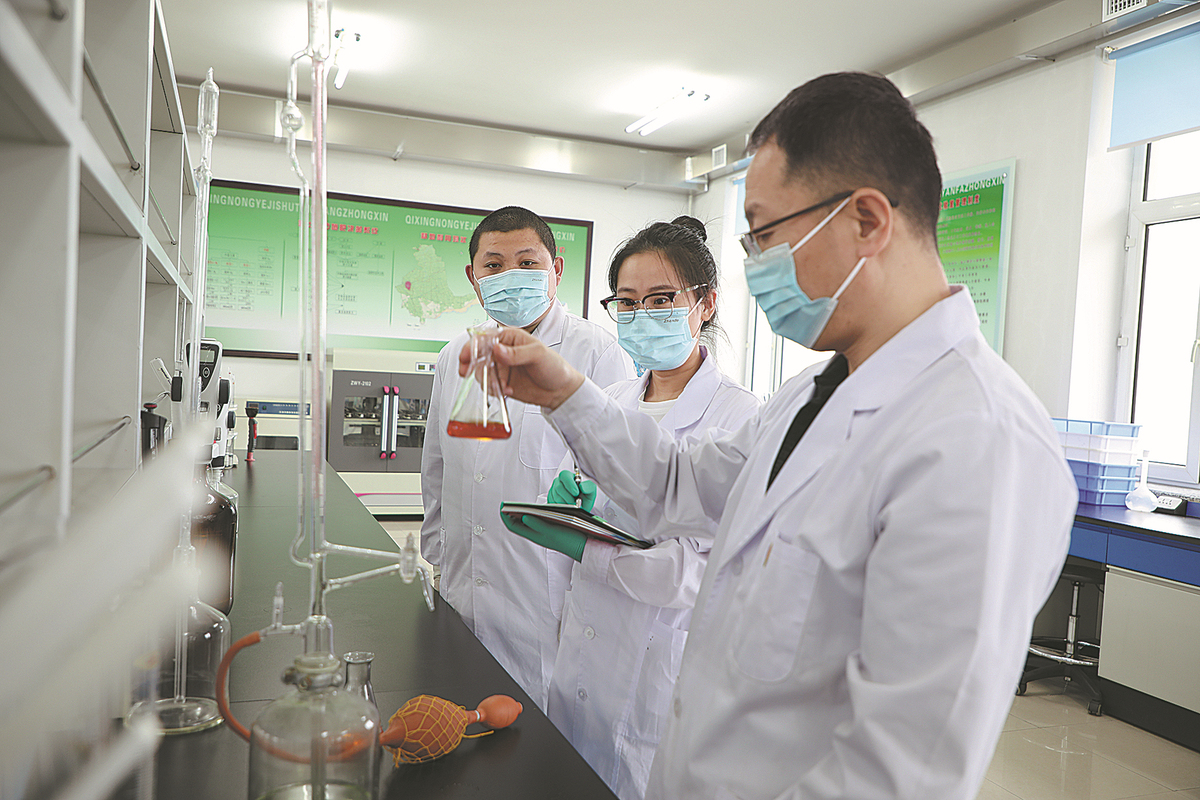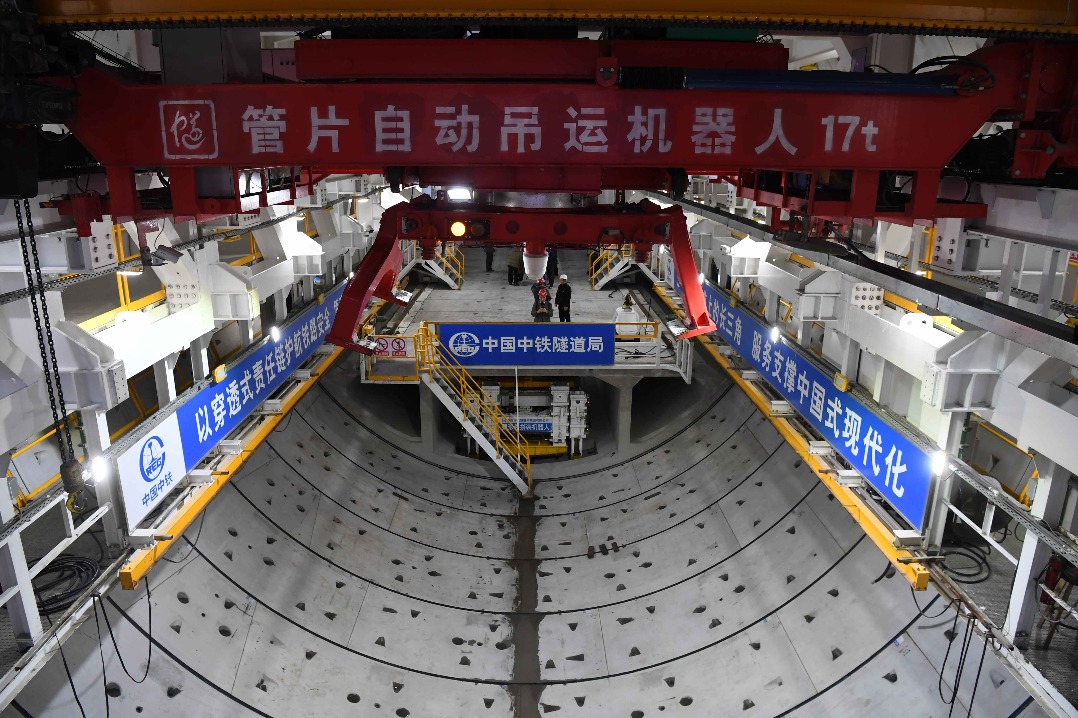Province reaps rewards of modernization
With tech-assisted agriculture, Heilongjiang continues to lead nation in grain output


According to the provincial government's work plan for soybean production in Heilongjiang for 2022, released at the beginning of the year, the planting of soybeans was to increase across the province this year, following a plan by the central government to rejuvenate the nation's soybean production.
Zhang Wenhai, 44, a farmer in the city of Hailun, Heilongjiang, which is a major production hub for high-quality soybeans, planted soybeans on two-thirds of his 1,340 hectares of land and corn on the remainder.
"The proportion of the two crops was the opposite last year, due to the companion planting of corn and soybeans, which can help protect the black soil and increase output," he said. "When I heard that the subsidy for planting soybeans would rise this year, I believed I could get higher profits." Companion planting refers to the alternate planting of corn and soybeans each year to protect the soil.
"Moreover, soybean prices have continued to rise in recent years. I can sell the crop for more than 6 yuan a kilogram, compared with 5.5 yuan last year," Zhang said. "With subsidies from the local government included, I earn about 5,000 yuan from a single hectare of soybeans."
According to the plan, soybean subsidies in the province will be 3,000 yuan per hectare higher than those for corn this year, though the precise amounts have not yet been released. Last year, soybean subsidies were 3,720 yuan per hectare, while those for corn were 1,020 yuan.
With higher profits from soybean farming, along with policies adopted by the local government to encourage soybean production, the amount of land in Hailun planted with soybeans this year is expected to rise to 180,820 hectares. That would be a year-on-year expansion of 16 percent, accounting for more than half of Hailun's farmland.
The city will take more measures to help farmers improve soybean productivity and quality, including promoting more superior species, building a pilot area for highly efficient production of high-quality soybeans and strengthening soil protection.
Heilongjiang has also seen remarkable effects after years of efforts to protect black soil. Black soil, according to the United Nations' Food and Agriculture Organization, refers to mineral soils with a black surface enriched with organic carbon that is at least 25 centimeters deep.
With its high density of organic matter, black soil is very suitable for growing crops. However, long-term cultivation and overuse of fertilizers have caused degeneration of the soil, threatening the local environment and grain production, said Yue Zhongming, an official on the Legislative Affairs Commission of the Standing Committee of the National People's Congress, after the Law on the Protection of Black Soil was passed in June.
Faced with the erosion of black soil due to intensive cultivation and the effects of wind and water, Heilongjiang has taken measures according to local conditions, including covering the soil with straw after harvest, increasing the amount of organic fertilizer and using crop rotation.
Since 2015, the province has established 20 pilot projects on the protection and utilization of black soil, covering an area of 348,400 hectares.
The average thickness of the topsoil of cultivated land increased from 19.8 cm in 2014 to 23.3 cm in 2019, according to the provincial Department of Agriculture and Rural Affairs.
According to the province's plan for protecting black soil, by 2030,9.86 million hectares of black soil in the province will be better protected and will see an annual grain output of 80 million tons.
Over the past decade, Heilongjiang has vigorously promoted its agricultural modernization.
At present, 6.09 million hectares of high-standard farmland that can withstand drought or flooding have been developed in the province.
By the end of 2021, 98 percent of operations during the cultivation and harvesting in the province was done by machines, according to the province's agriculture department.
zhouhuiying@chinadaily.com.cn
























